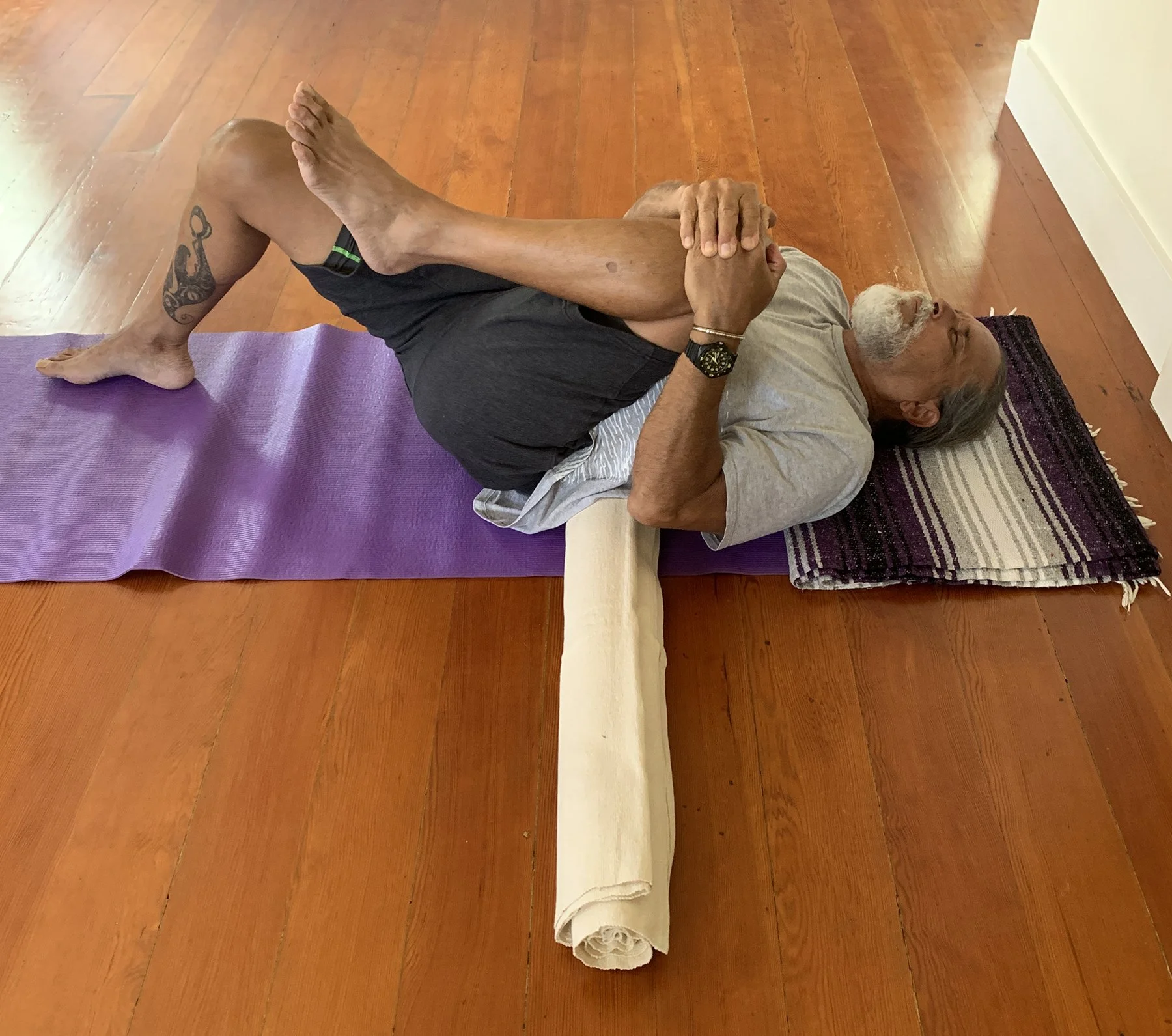What is Yoga Therapy?
Yoga therapy occupies the space beyond physical therapy and traditional talk therapy. It is a somatic (body-based) therapy that recognizes the interrelationship of mind, body, emotions and spirit, and works to address the whole being. Sessions may employ physical movement through asana (poses), pranayama (guided breathing techniques), yoga nidra (meditation and guided visualization), and other trauma informed modalities.
you are unique
…and so is the approach to your therapy. Each session is tailored to your specific needs.
Some of the issues yoga therapy can address:
Musculoskeletal: Back problems including lower back pain, slipped disc, scoliosis, spinal fusion, and sciatica. Neck and shoulder pain. Joint problems of the knee, hip, ankle, wrist.
Digestive: constipation, acid reflux, and IBS.
Psychological: depression, anxiety, life transitions, grief, addiction recovery.
Nervous System: headache, migraine, chronic fatigue.
Women’s Health: menstrual problems, menopausal symptoms, healthy pregnancy and postpartum healing, post-op breast cancer recovery.
Circulatory: high or low blood pressure, circulation problems.
Respiratory: asthma, sinus trouble, recovery from illness.
we look to the source
Low back pain can often be traced to problems of the hip, knee, or ankle, weakness in the core abdominal muscles, or postural imbalances. It can also signal deep seated fears about one’s ability to survive and thrive.
The difference between Iyengar Yoga Therapy and physical therapy, or other forms of corrective movement therapy, is that yoga therapy takes a holistic and relational approach to problem-solving - that means we look at the whole being, not just a particular body part. Yoga Therapy addresses the often subtle connections between mental and emotional states and physical problems. For example, low back pain can often be traced to problems of the hip, knee, or ankle, weakness in the core abdominal muscles, or postural imbalances. However, it can often signal deep seated fears about one’s ability to survive and thrive, beliefs about a person’s right to exist and live according to their own principles. This understanding enables clients to move beyond the physical concern and get to the root of the “problem.” We begin work on the physical level because it is often the most pressing, and easily accessible.
APPROACH
In each Iyengar Yoga Therapy session, a safe and stable container is created between therapist and client. This safe space optimizes the client’s innate capacity for recovery. This work is based on the yogic principle of skillful action (yogah karmasu kaushalam) which means to do the right thing at the right time. It’s a simple principle, but to put it into practice requires a unique and finely-tuned skillset that includes specialized training, a daily personal yoga practice, a highly empathic nature, and years of experience working with an inclusive range of student bodies. Iyengar Yoga Kauai’s founder, Melinda Morey, embodies these principles.
WHAT TO EXPECT
Sessions are 60-90 minutes long and a commitment of three sessions is recommended. A brief health assessment is included in your first session. You will learn practices that you can do at home to get relief on your own and keep progressing. If you wish, Melinda will photograph you during the session so that you can refer back to your photos when you practice at home. You will learn adaptations to common yoga poses that you can do in the general classes, as well as sequences to practice at home to address particular issues.
breast cancer after-care
Yoga therapy can address issues of circulation, inflammation and mobility following treatment.
In a therapy session with Melinda, you can expect:
Individualized attention and discussion about your particular concerns
A safe physical and emotional container to address your concerns
The development of a sequence of poses that address the source of your health issue(s)
Prop setups, customized for your body, that target the area(s) needing attention
Guided breathing and relaxation techniques
At the end of a session, students report that their pain diminishes or disappears. Mental agitation and worry are replaced by a sense of abiding calm. The nervous system and respiration are brought into a state of tranquility that is conducive to deep healing of the cells, emotions, and subtle body (prana).
If you would like more information or to schedule a session, click the button below.




